What better way to learn about a place than from first-hand accounts. We recently were fortunate enough to be joined on a Colombia tour by writer and lifelong learner Dale Dunlop who was kind enough to share his impressions of Columbia with us.
With his permission, we’re sharing his take on this beautiful South American country. This account was originally posted on his travel website The Maritime Explorer. We hope you enjoyed his blog posting as much as we do.
This is the third post on my ongoing trip to Colombia with Canadian tour company Adventures Abroad. The last post was an introduction to Colombia and featured a visit to the amazing Paloquemao Market. That visit occupied the first morning of the trip after which we reboarded our bus and headed for the small city of Zipaquira Colombia, only 30 miles (42 km.) away. Our stated purpose was to visit the famed Catedral de Sal, but our local guide, Catalina Rincón had another activity in mind as well – one that wasn’t on the itinerary. So hop on board with us and together we’ll find out why Zipaquira is such a popular destination for Colombians and tourists alike.
Zipaquira Colombia
In the last post I noted that Bogota traffic around 9:00 AM wasn’t too bad because of the system that permits only half the possible cars to be on the road at rush hour each day – they alternate between odd and even licence plate numbers, like London. However, that expires after rush hour and by the time we left the market the traffic was bumper to bumper. The upside was that the traffic was moving, if fairly slowly, and that no one saw it necessary to blow their horns in a ridiculously futile effort to speed things up. It was what it was and people seemed to acknowledge that.
Just when it seemed like Bogota would never end we did hit green countryside with farms and fields, but that didn’t last more than maybe a few miles before we turned off for Zipaquira and the urbanization began again. The city of Zipaquira owes its existence to one commodity – salt. Long before the Spanish arrived the indigenous people of the area were mining and trading salt, even for items we now consider much more valuable, like emeralds. When the Spanish did arrive they did two of their usual things – they established a town based on a Spanish design and stole the salt mines. They did however insist that the natives continue to work the mines, except that they weren’t going to get paid for it or have any ownership interest. The salt mines continue to this day, without slave labour thankfully. In 1801, that famous polymath Alexander Von Humboldt visited the area and devised a much more efficient system for mining the salt than was in use before that time. That allowed the mines to expand exponentially and create huge underground caverns that some genius or nut, depending on your point of view, decided would make for a great cathedral. That’s the main reason we’re here, but first we headed for the main town plaza to grab some long awaited lunch.
I’ve visited very few smaller Latin American colonial cities in my travels. The last was Valladolid, Mexico a few years back, so I wasn’t sure what to expect of Zipaquira. Surprise, the main plaza could be right out of Spain.
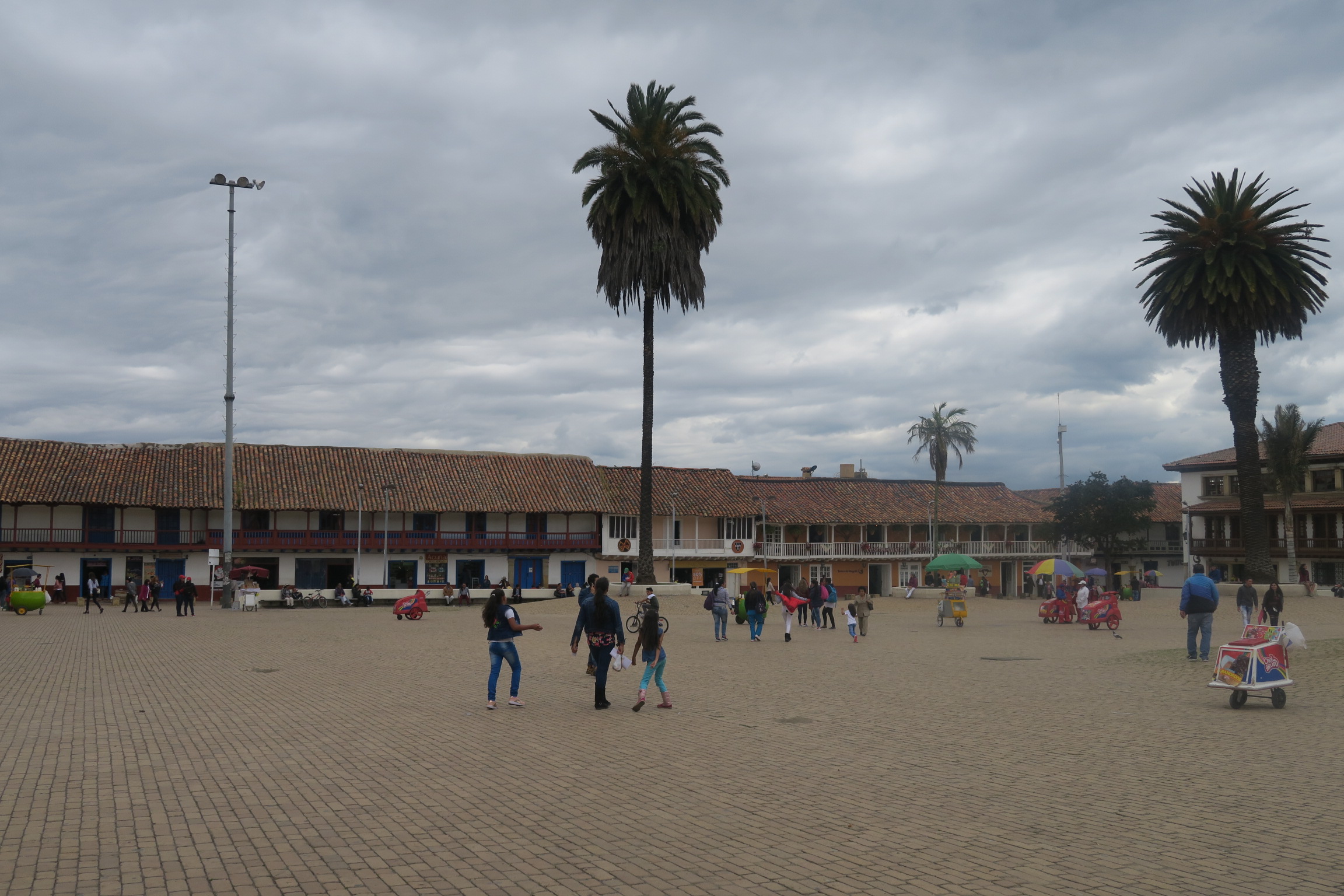
There’s always a square open area with a string of continuous buildings on three sides and of course, the cathedral on the other.
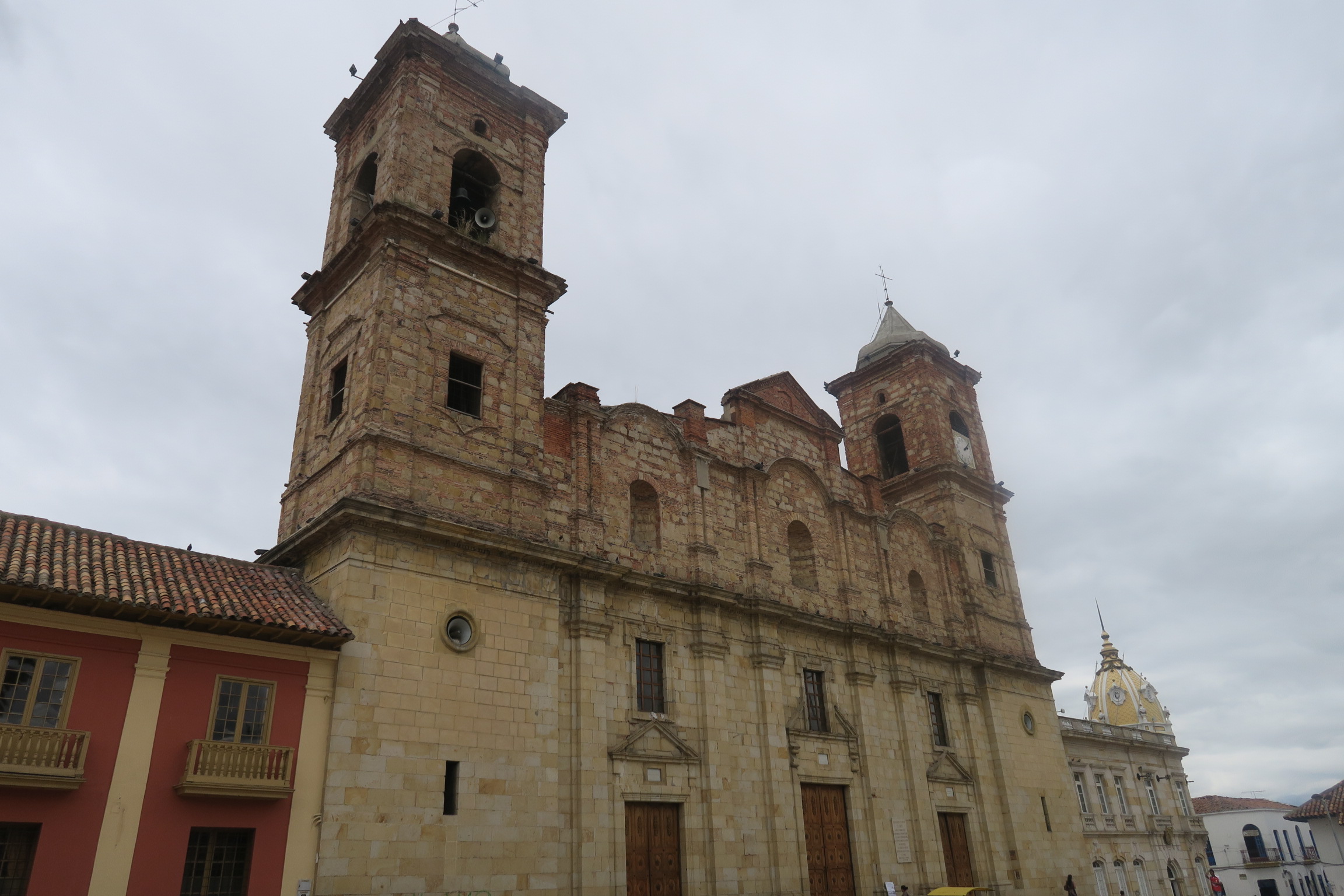
The plaza is the centre of social activity in the city and so it is with Zipaquira – always children on bicycles, often up to three at a time, circling the group of strangers who have walked into their midst; gaggles of giggling teenage girls followed by would be macho boys and old doñas methodically patrolling the perimeters. If not for the verdant hills surrounding the city, this could be any small city in Andalusia.
Adventures Abroad always includes breakfast and dinner in their pricing, but not lunches, so Andres freed us up for same, to meet in an hour’s time to head to the Catedral de Sal. There were lots of choices around the plaza, but Alison and I always try to find a place where the locals are eating. At all costs avoid American food such as hamburgers or pizza. It might be OK, but more likely than not in a place like Zipaquira, not. The one requirement I have for lunch is that there must be beer or cerveza as it’s called in Spanish speaking countries.
I did my research on Colombian beer before leaving and some beer lover’s web sites consistently praise the quality of Colombian beer, especially those from the Club Colombia brewery. We find a place on the plaza that has locals and beer. It is run by an elderly couple who speak no English and regrettably our Spanish is pathetic. We settle for what the lady adamantly points to on the menu and given that it’s nowhere near the most expensive item, I’m sure she’s being sincere. This is her specialty of the house. We have no idea what it is, but order two and two Club Colombian Dorados, a light lager.
Here’s what what we got.
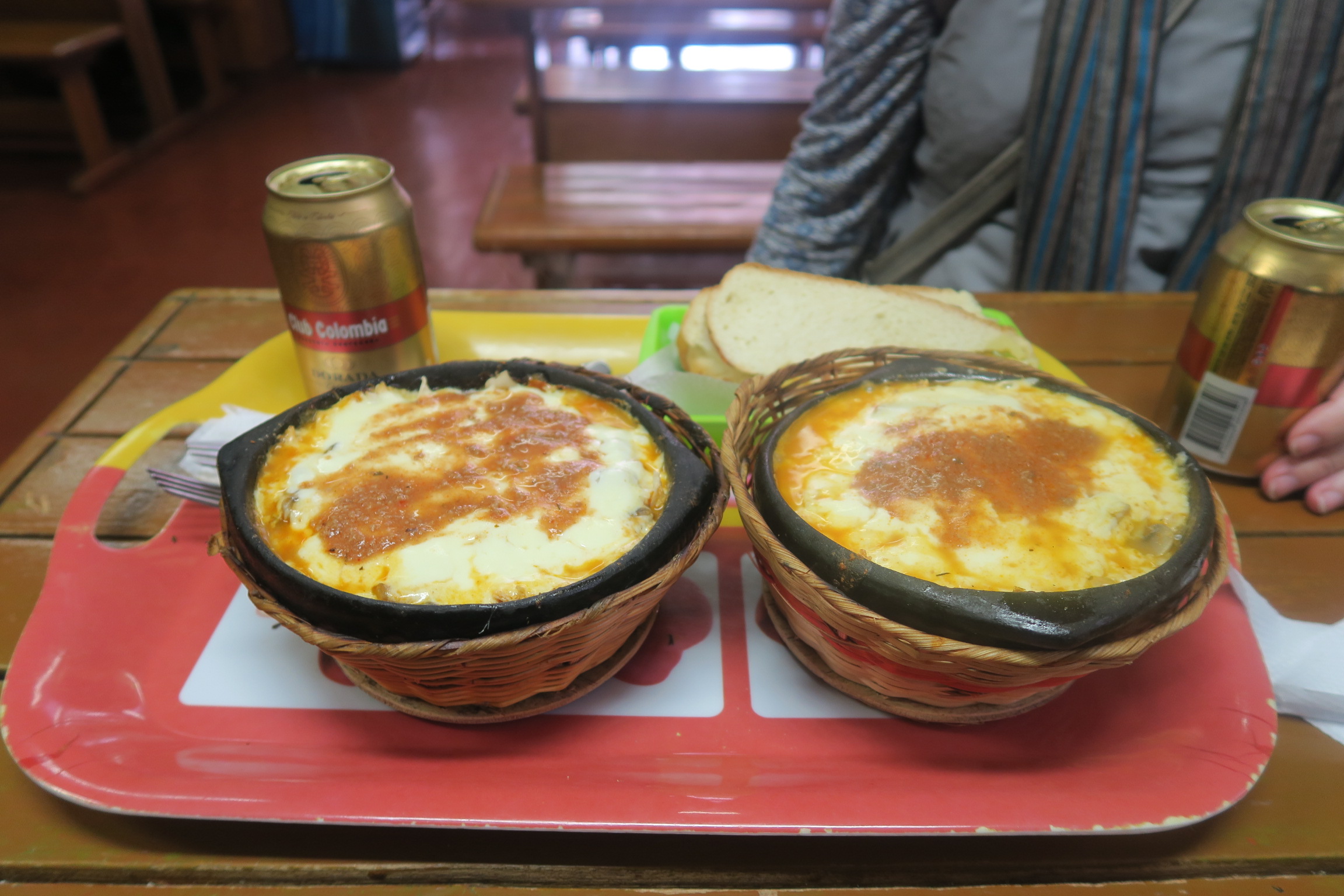
These were an absolutely piping hot and delicious version of lasagna with lots of cheese, meat and pasta in a thick tomatoey sauce. One would have been enough for the two of us. The beer was ice cold and refreshing. Total price, about $15.00 Cdn. or $12.00 USD.
Catedral de Sal
Zipaquira is not a tourist town, however, tourists and Bogotanos do regularly visit what hubristically calls itself the #1 tourist attraction in Colombia – the Catedral De Sal or Cathedral of Salt. We are about to find out.
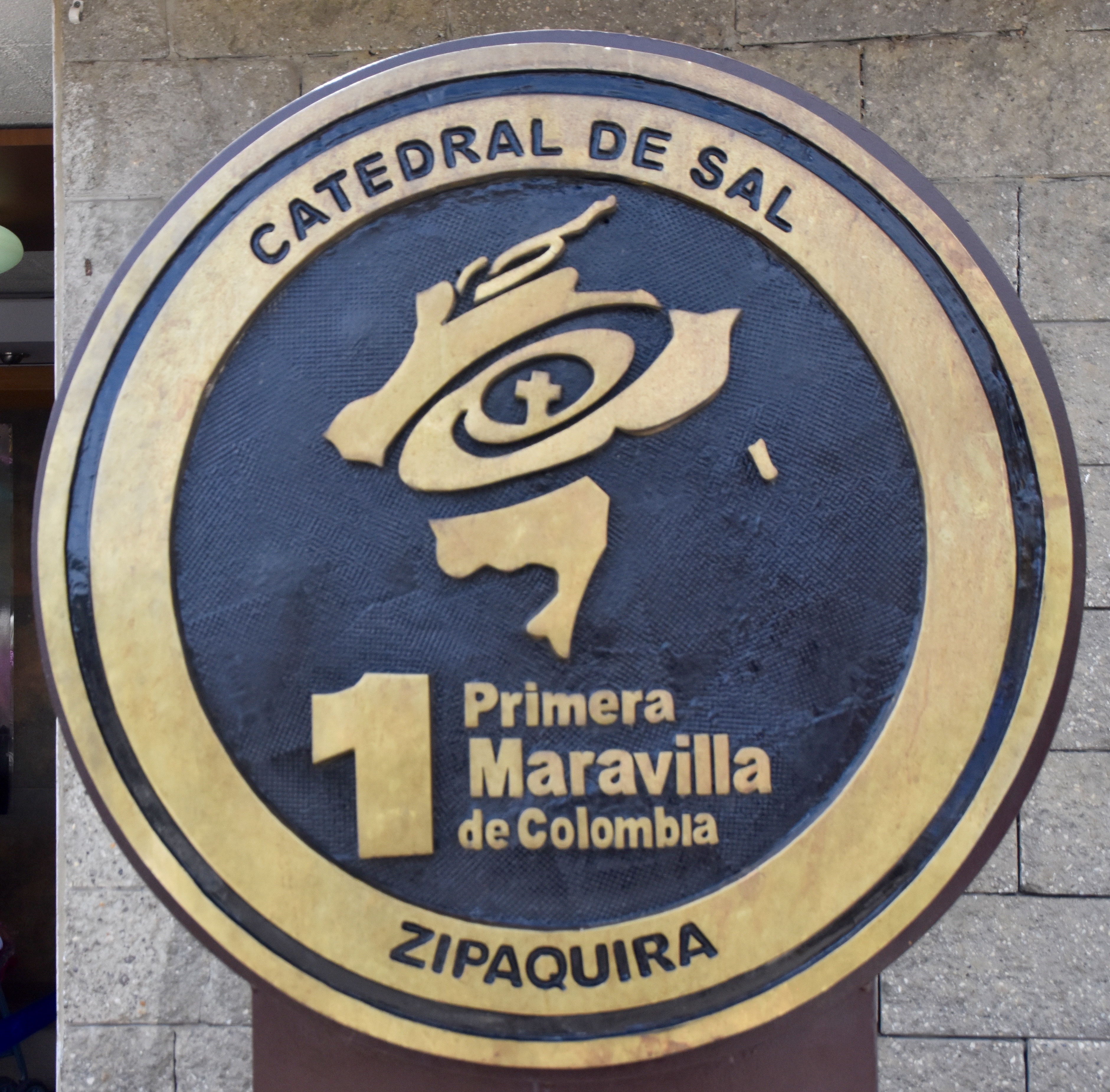
I mentioned earlier that Zipaquira was a salt mining place since pre-Columbian times and that Alexander von Humboldt had devised a process for more efficient extraction of salt in 1801. Salt mining continues in Zipaquira to this day. Once the salt is extracted it leaves huge underground caverns that some enterprising genius thought could be turned into an underground church. Thus in 1954 the first underground church at Zipaquira was opened and became an instant hit. However, it proved too unstable and potentially dangerous and was closed in 1992. Can you imagine what the faithful would say if God permitted an underground church to collapse on top of hundreds of pilgrims? Not good for business, but the business was good so a second much larger church was opened in 1995 and named the Catedral de Sal, even though it has no bishop and thus is technically not a cathedral.
Make no mistake, while the Catedral de Sal is a real church and many of the people visiting are pious pilgrims, it is primarily a money making tourist attraction. The grounds surrounding the entrance contain numerous other things to do, all of which cost money – a salt museum (hooray!) climbing wall, a light show etc. However, we are here just to view the Catedral de Sal and in order to do so, you must go on a guided tour. Luckily we have our local guide Catalina Rincón who has led this tour many times before so we don’t need to wait in line until enough people are present to meet the quota for a guide.
The Catedral de Sal is 200 metres (220 feet) below ground and it has no elevator so you need to walk down and back up. Good footwear and a flashlight are helpful (these days everyone has one in the smart phone). Here is the entranceway.

After walking down about 500 feet (150 mt.) you arrive at the first of fourteen Stations Of The Cross which are one of the principal attractions of the Catedral de Sal. In case you are a Philistine like me, or a Protestant and don’t know what these are, they represent fourteen incidents on the day of Christ’s crucifixion starting with the condemnation by Pontius Pilate and ending with the deposition into Jesus’ tomb. Usually the scenes are depicted literally and one has no trouble determining which is which, but the Catedral de Sal has taken a different and perhaps unique approach. Each station is represented only by a cross, but each with very subtle differences, that when explained by Catalina, become obvious. Here are a few of them.
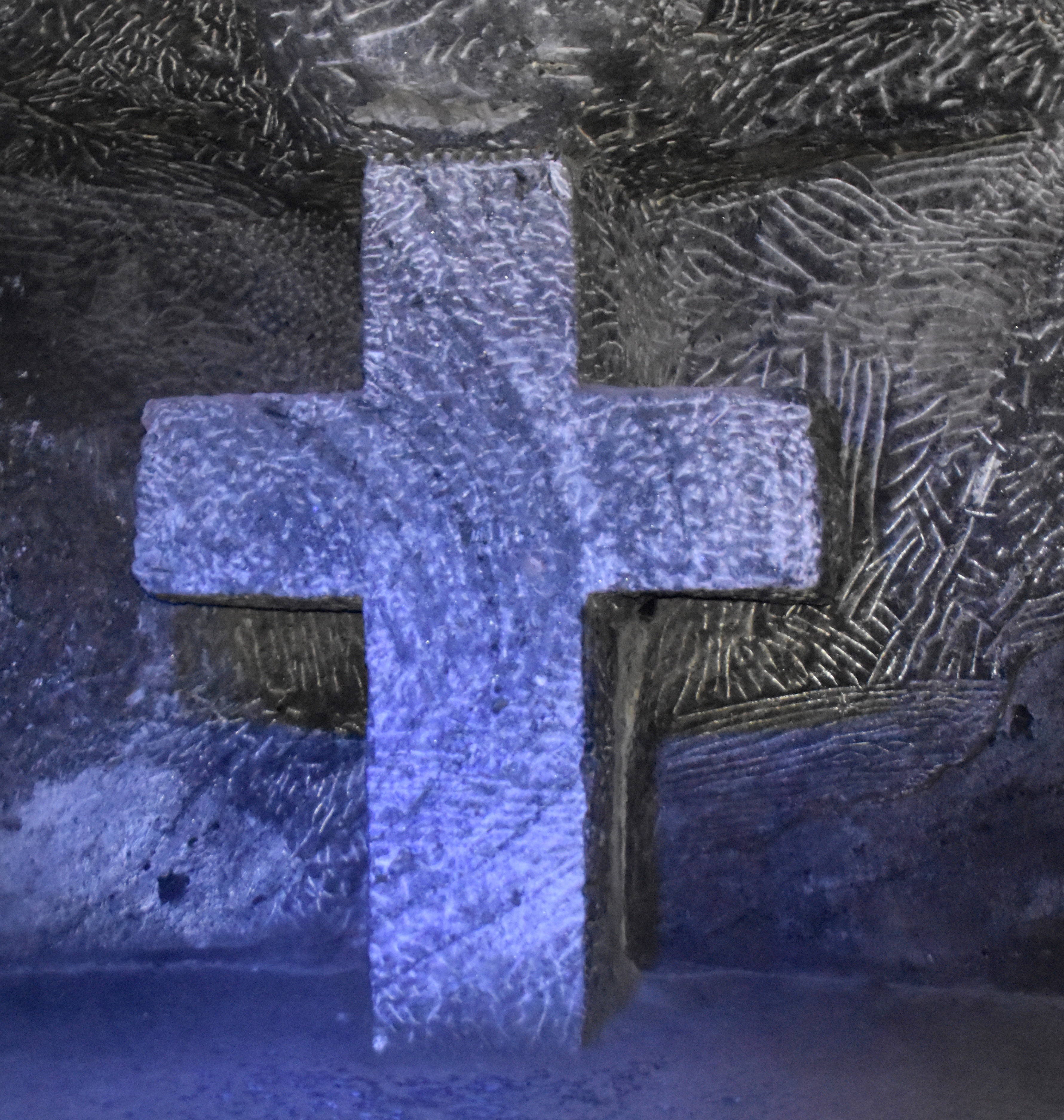
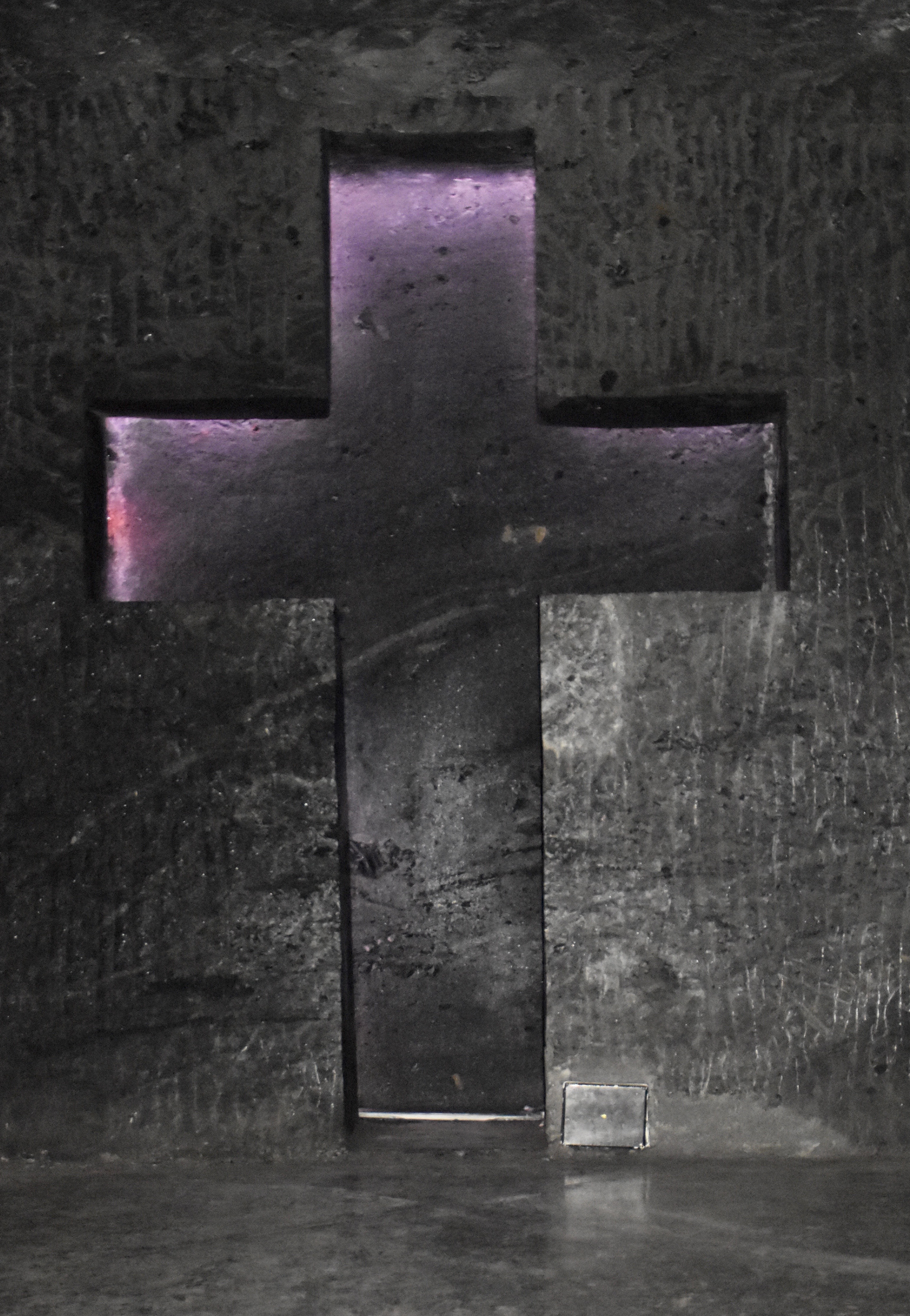
This was my favourite. It’s the very opposite of the other stations.
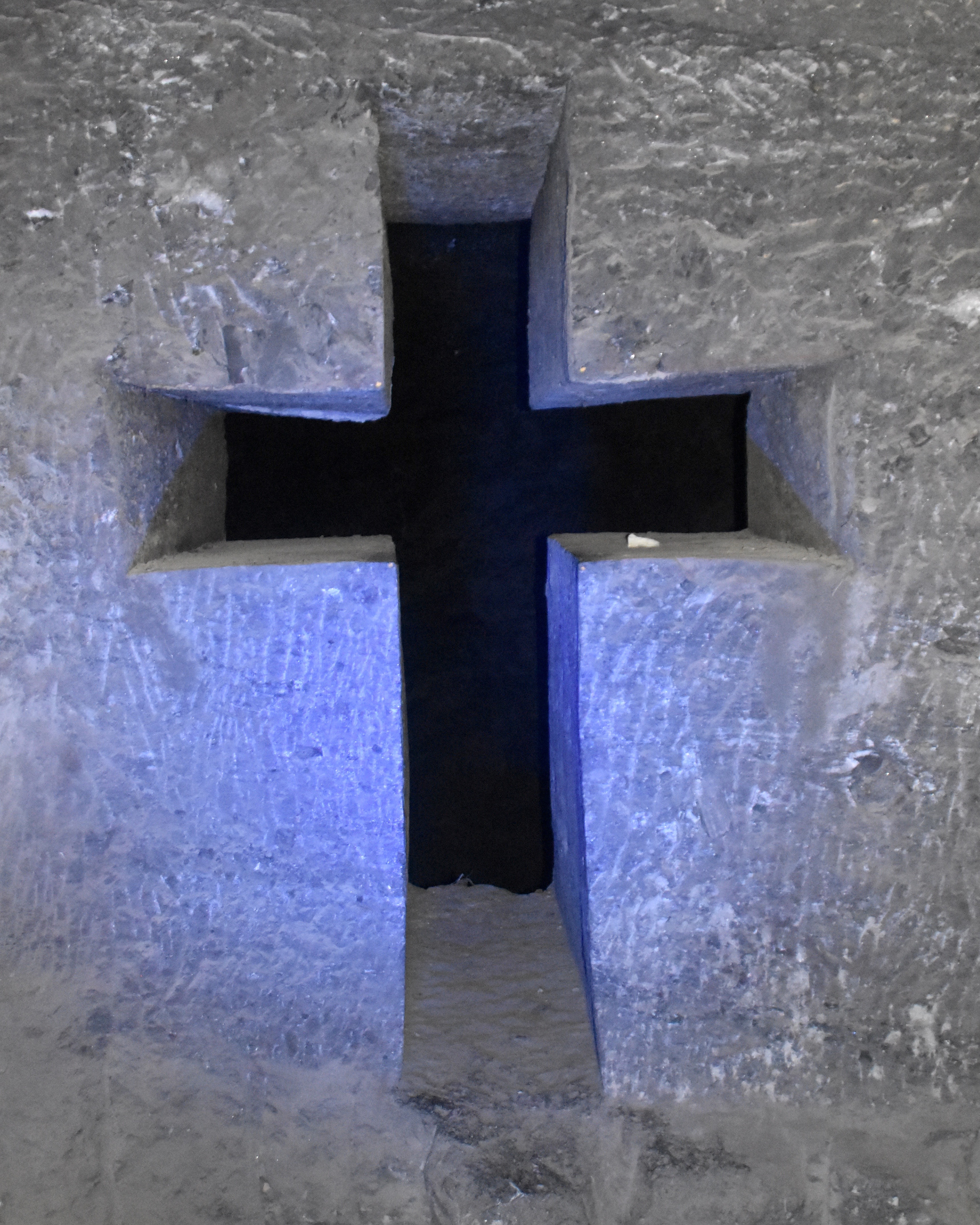
Stopping at each station makes for a relatively easy way to make the descent to the actual nave of the cathedral where this massive cross is the final destination. You can first see it from hundreds of feet away and as you gradually get closer you realize that the cross is actually incised into the surrounding rock, a real trompe l’oeil effect.
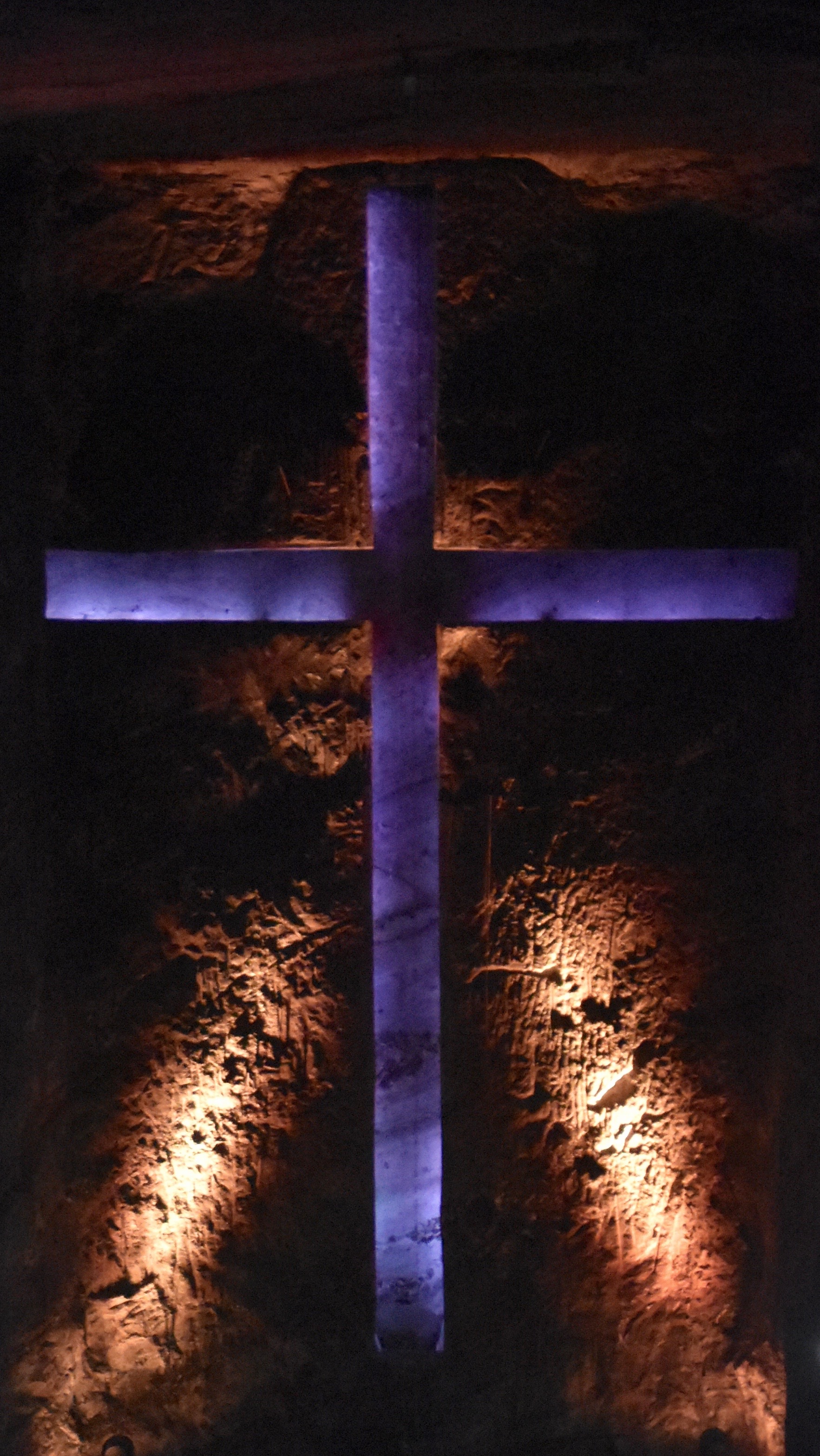
Near the main cross is this recently added statue of Papa Francisco or Pope Francis who visited the Catedral de Sal on a recent visit to Colombia.
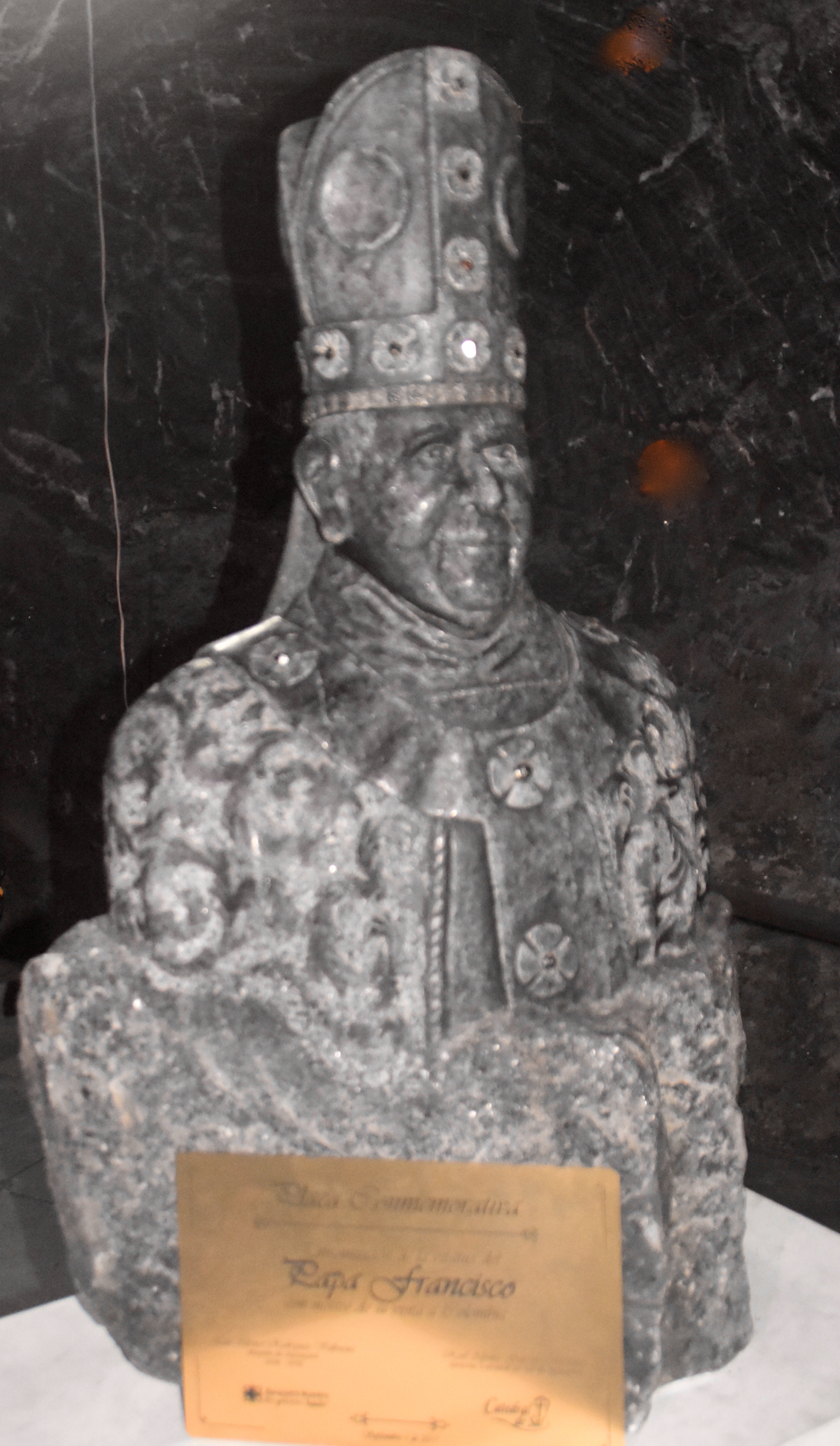
After the visit is complete, you can visit one of at least a dozen underground shops in the Catedral de Sal, many of which are selling pretty good handicrafts, jewelry and better quality religious souvenirs. You an also get something to eat or drink. After this you make the climb back to the entrance and the sunshine and warmth of the Colombian afternoon.
Is the Catedral de Sal the #1 attraction in Colombia? Maybe from a visitation viewpoint, but certainly not in terms of ranking the top things to see and do in this country. Considering the ecological, cultural and historical breadth of Colombia, the Catedral de Sal might not even make the top ten list, but I do not want to denigrate a visit here. The Stations of the Cross and the Catedral itself were impressive and I’m glad it was included on the tour.
A Game of Tejo
After leaving the Catedral de Sal we headed back into Zipaquira and eventually ended up in a narrow street with sketchy looking buildings on all sides. Catalina said “We’re here!” and we all hopped out not having a clue as to what could possibly be of interest in this spot. A couple of guys pushed back a corrugated aluminum door and we walked into this scene.
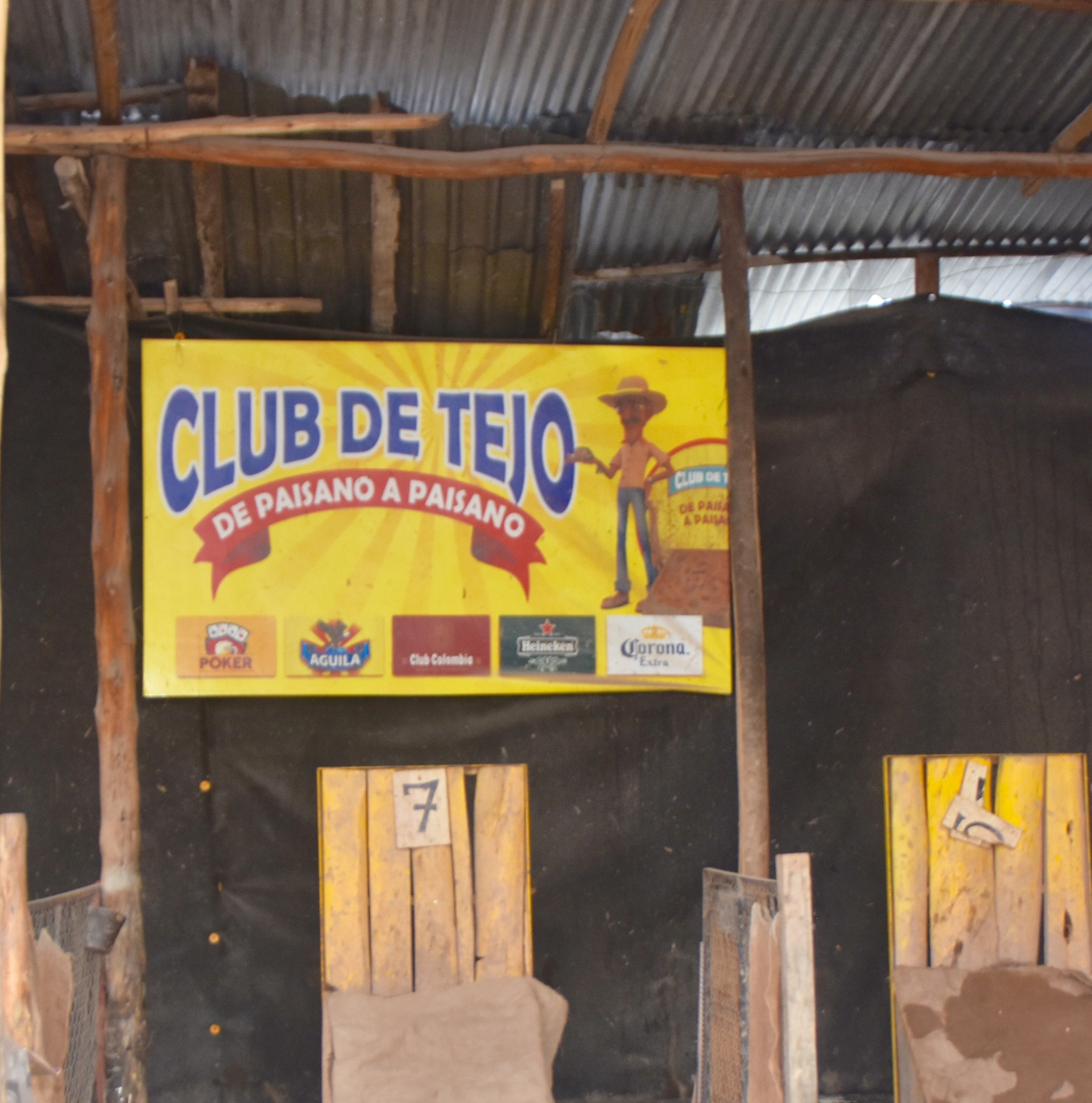
Catalina announced that we were going to play the traditional Colombian game of tejo. I’m not even going to attempt describe what the game is all about, so I’ll let Tony Bourdain do it instead.
This sounds like my type of game. Andres gets things started by buying beers all around and Catalina gives us shots of Aguadiente, a Colombian liqueur that literally translates as ‘firewater’. It tastes a lot like Turkish raki and is not too hard on the throat.
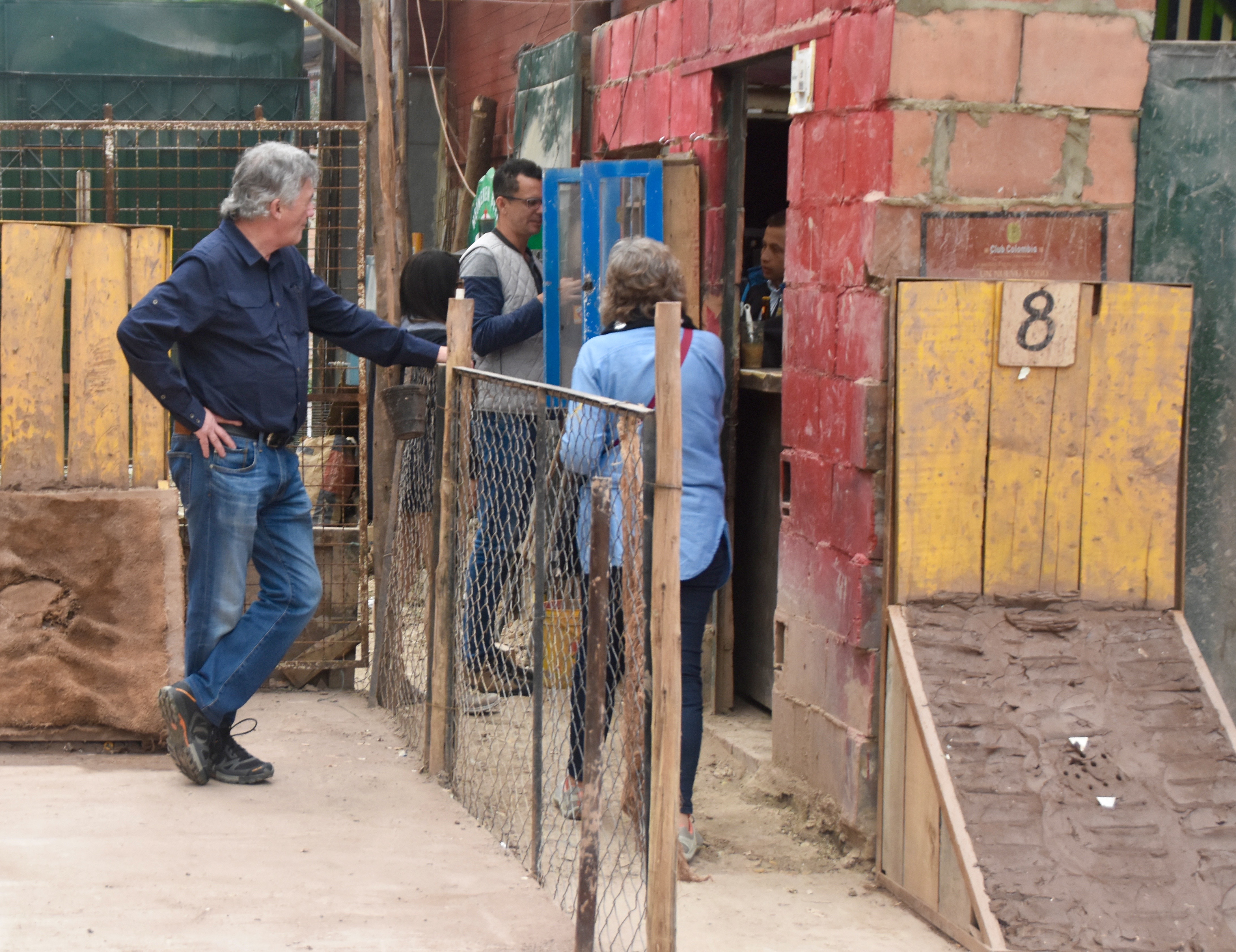
That’s the tejo landing area on the lower right with the white triangles representing the fireworks that Tony talked about. For some reason ours were not real. C’mon – alcohol and foreworks. What could possibly go wrong?
Anyway, Catalina divides us into teams, we all get in a few shots, both of aguadiente and with the tejo puck and I have no idea who won, what the rules were or how we did, but Alison looks too damn serious for a drinking game.
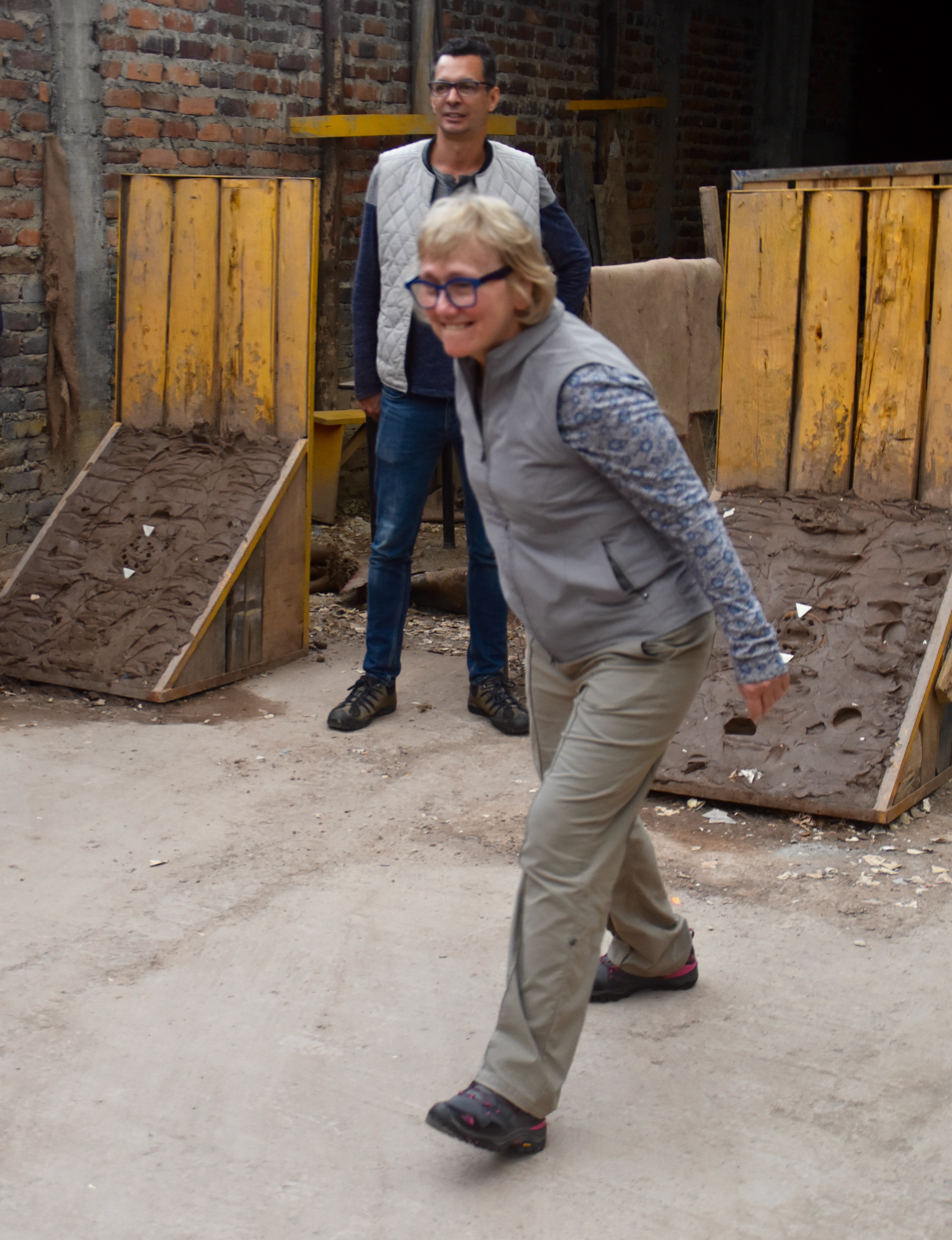
Needless to say the ride back to Bogota went much faster than the ride out as many of us slept most of the way.
I’ll end this post by posting pictures of two great dishes that Alison and I tried that night at the Puerta de la Catedral Restaurante in the old part of the city, which specializes in traditional Colombian cuisine. This is tripe soup and before you say “Ugh”, try it. You’ll change your mind.
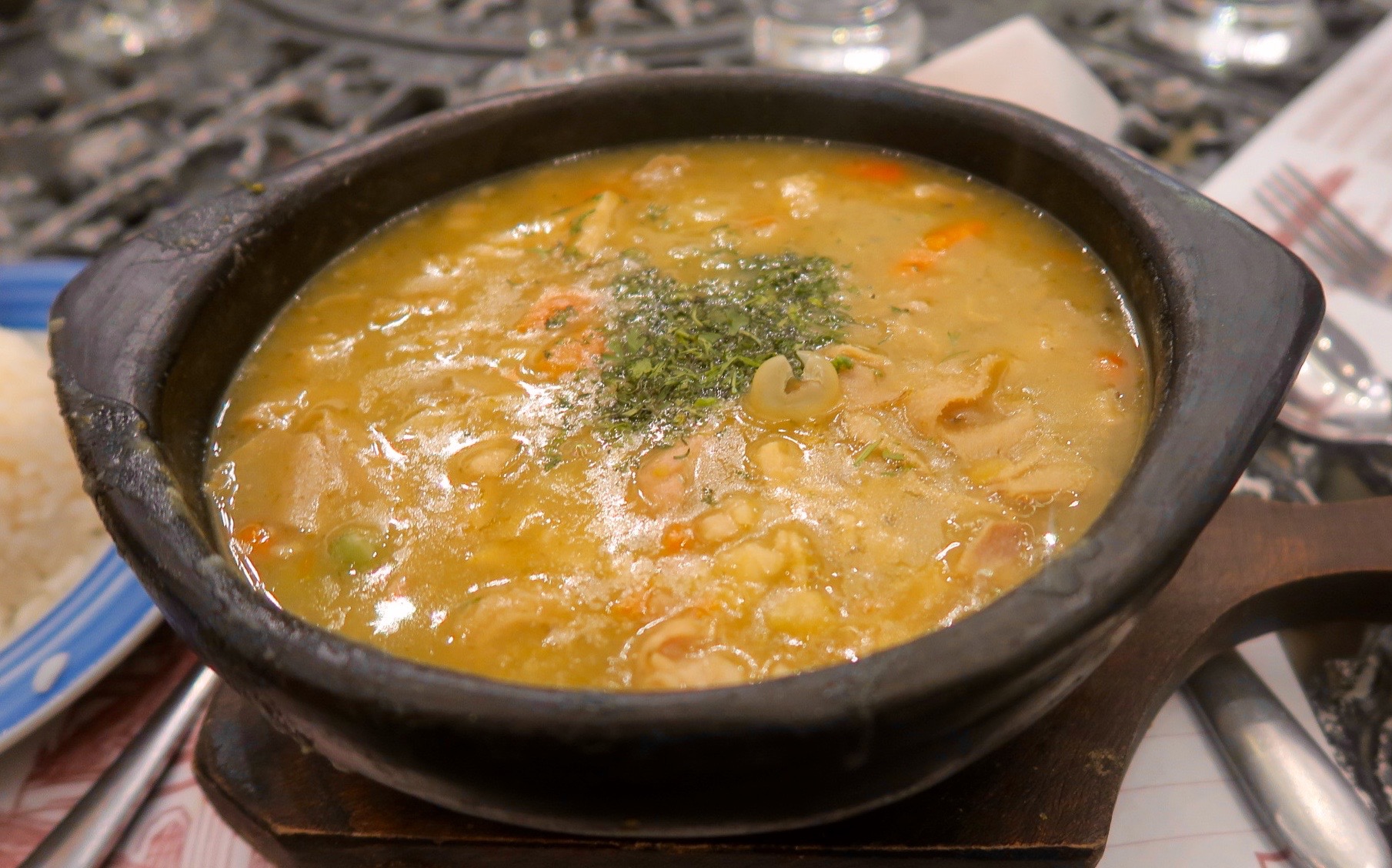
And this is a Bogotano version of pork stew. The Colombians are magicians with pork and make fantastic sausages. Combine that with eggs, beans and avocado and you’ve got heaven in a bowl.
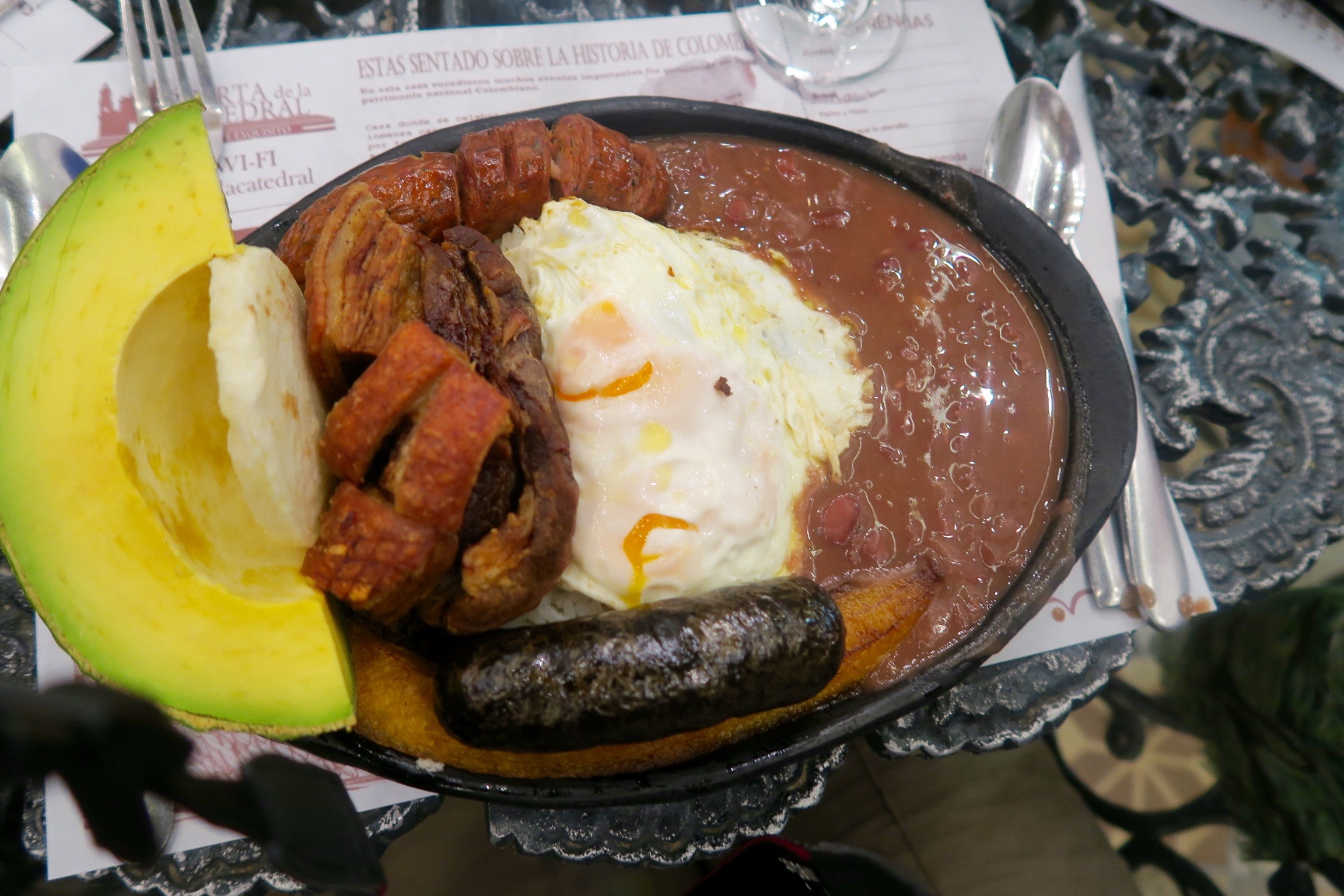
It’s hard to believe that everything in the first two posts from Colombia took place in just one day, but it did and this trip is off to a roaring start. Tomorrow we visit the real #1 tourist attraction in Bogota, Monserrate. I hope you’ll join us.
Thanks again to Dale for sharing his journey with us.
To learn more about our small group tours and specifically our Columbia tours, click here.